EYE ON THE SKY
Lagoon show
A star cluster embedded in a nebula makes for a smoky spectacle
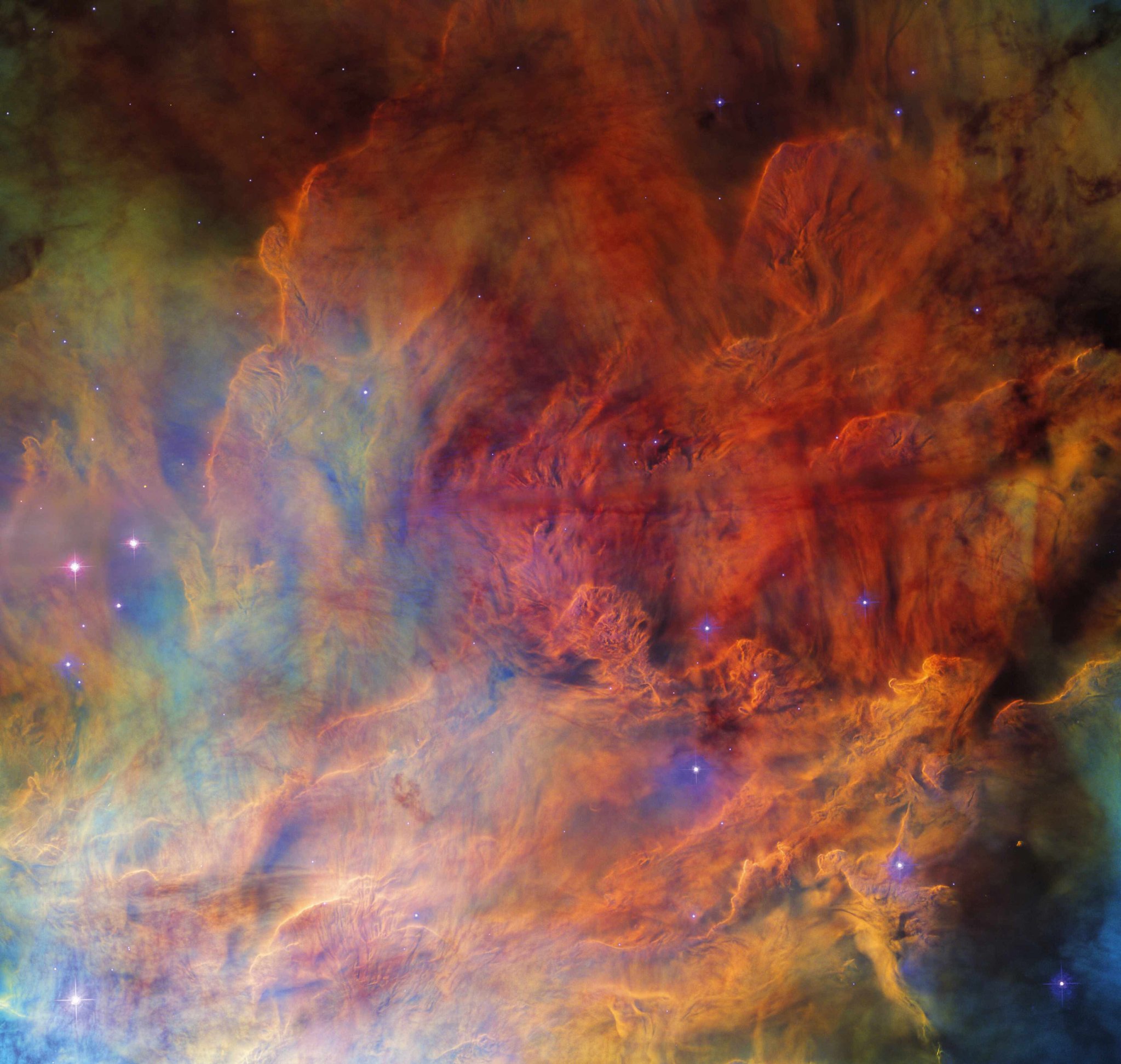
HUBBLE SPACE TELESCOPE, 12 DECEMBER 2022
NGC 6530 is an open cluster within the Lagoon Nebula, rendered by Hubble’s keen gaze and distinctive colour palette into a billowing mass of layered clouds pierced by the white-hot pinpricks of stars. A lot of what you can see is ionised hydrogen, laced with dust, and the nebula as a whole is known for forming this into new stars.
There are several thousand stars in the cluster, though only six are bright enough to see with binoculars from Earth. You’ll find it around 4,350 lightyears away in the constellation of Sagittarius, where it stretches across 14 lightyears. Hubble was looking for proplyds, ionised planetary discs surrounding young stars that are commonly found in the Orion Nebula, but are rare elsewhere. To do this, it used its Advanced Camera for Surveys and Wide Field and Planetary Camera 2 to gather near-infrared light from the nebula, resulting in this image.
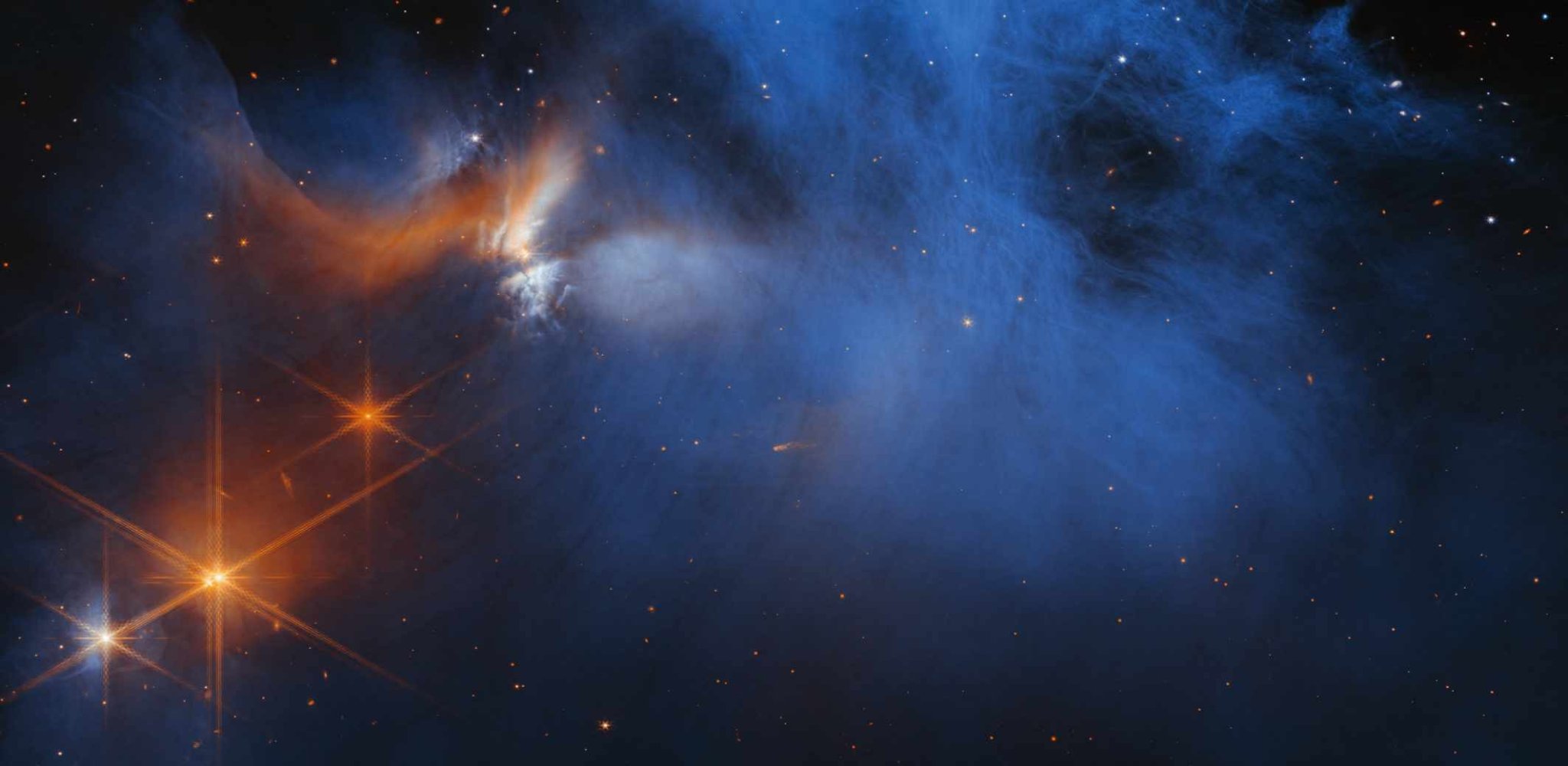
Dark materials
JAMES WEBB SPACE TELESCOPE, 23 JANUARY 2023
Lit by the glow of the protostar hidden at the upper left, the dark molecular cloud known as Chamaeleon I, 630 lightyears away, attracted the attention of JWST’s Near-InfraRed Camera due to the presence of ices in its chilly folds. As well as simple ices like water, these frozen molecules included ammonia, methanol and methane – the chilly ingredients for what may one day, once heated up, form young planets and stars.
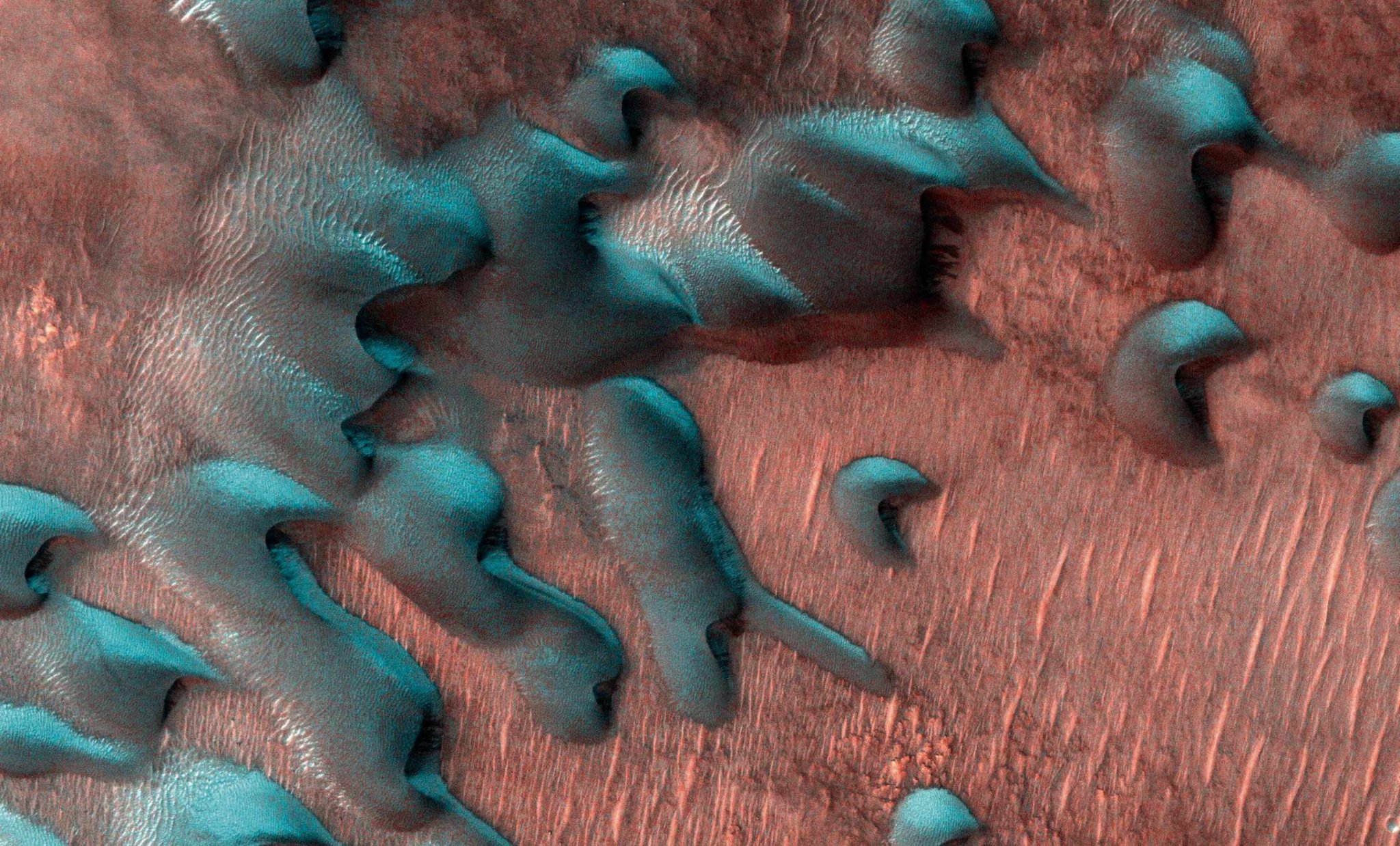
A snow day on Mars
MARS RECONNAISSANCE ORBITER, 22 DECEMBER 2022
This is Mars in winter, as seen from orbit with an ultra-high-resolution camera. These snowy sand dunes are topped with a mix of dry and water ice, but it’s the frozen carbon dioxide that’s most likely to linger, as water ice turns to vapour in the thin Martian atmosphere. And as carbon dioxide forms four bonds when it makes crystals instead of six like water, the dry snowflakes on Mars are cube-shaped, instead of the six-sided ones we’re used to on Earth.
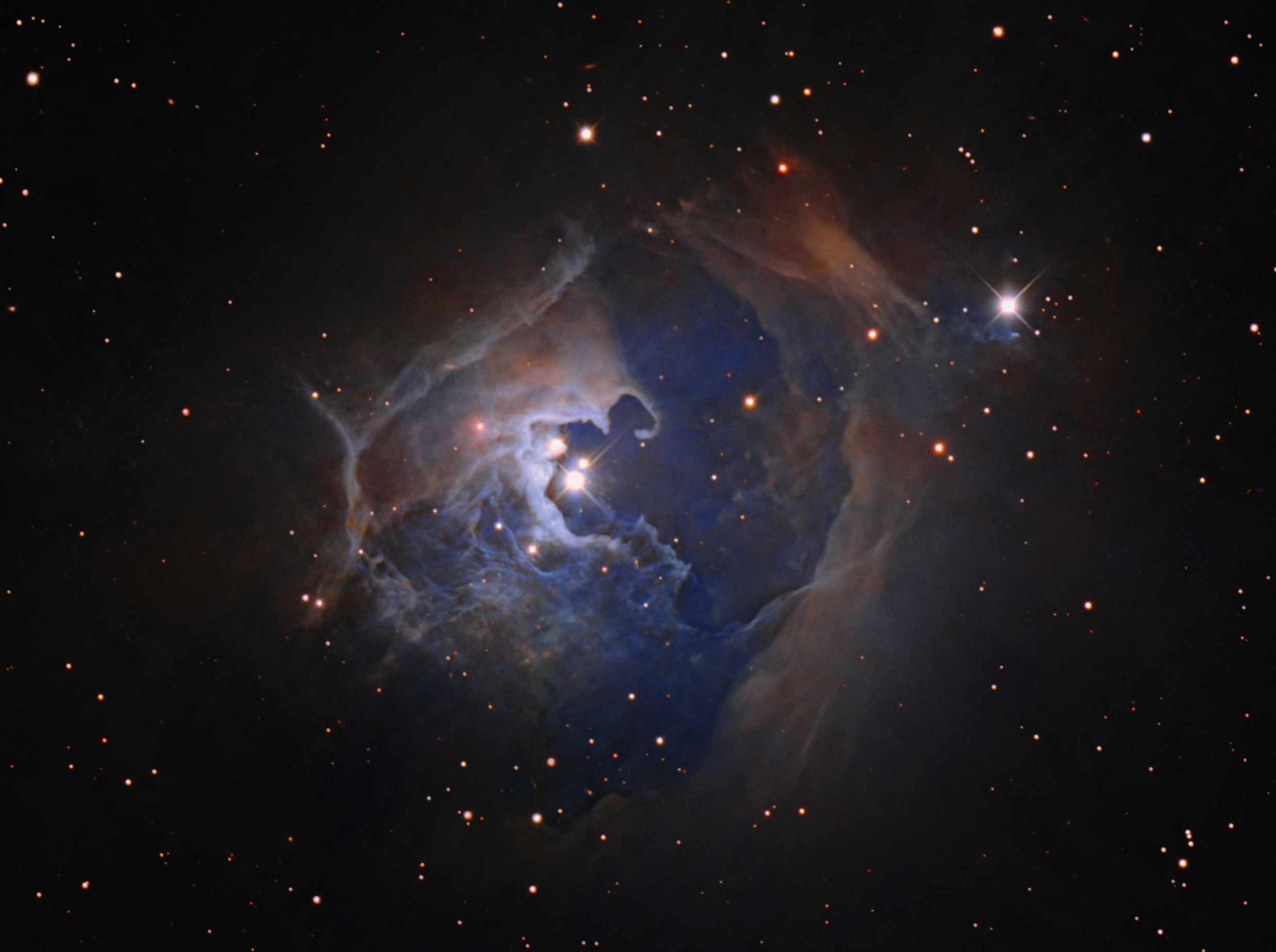
The young ones
NICHOLAS U MAYALL TELESCOPE, 4 JANUARY 2023
Near the centre of this image is a star called HP Tau. It’s not yet on the main sequence, and astronomers class it as a TTauri, a young, chaotic star less than 10 million years old that is still contracting after its birth. Located around 550 lightyears away in Taurus, HP Tau is part of a triple-star system, with all three surrounded by a large reflection nebula.
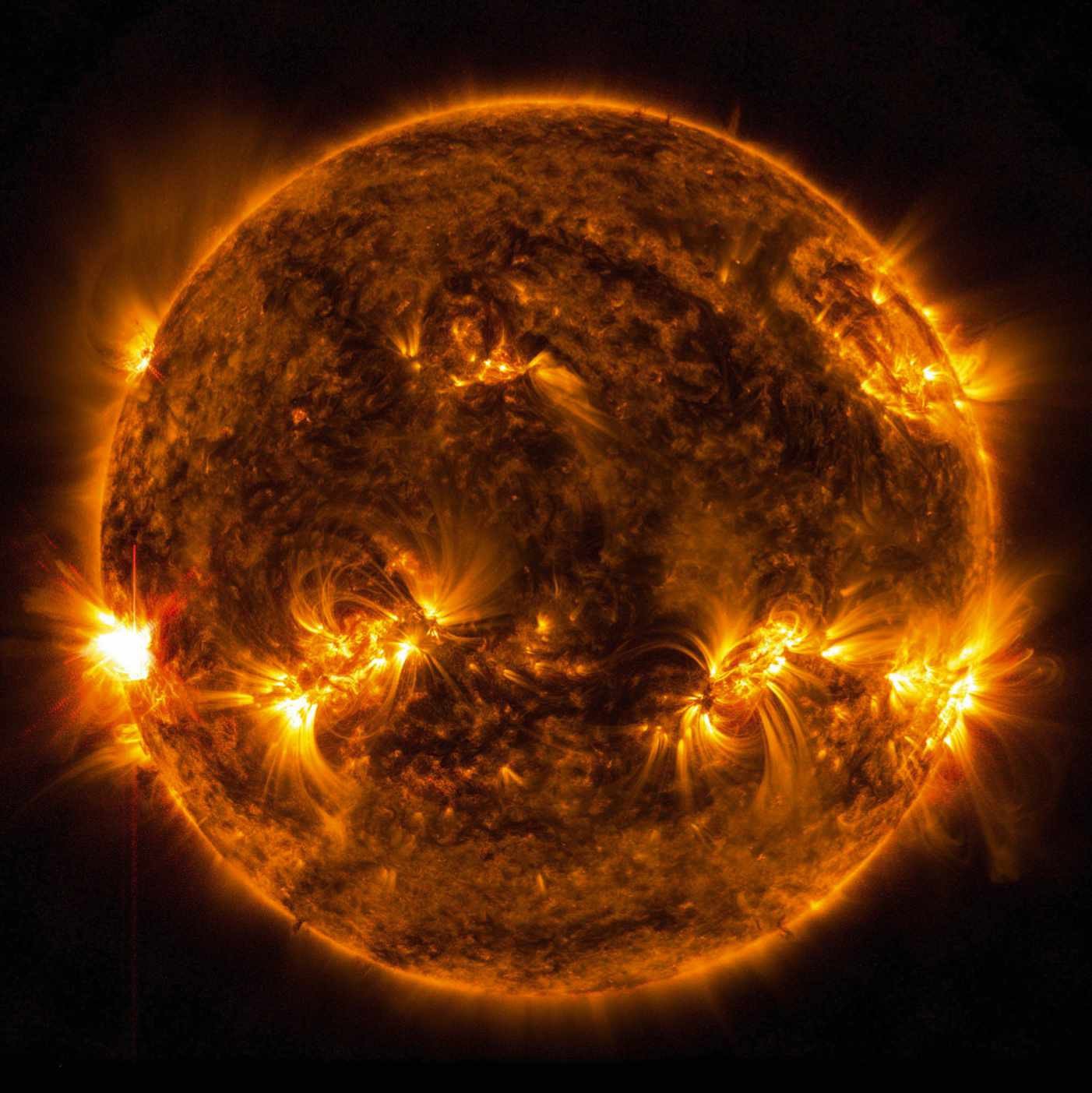
Vanity flare
SOLAR DYNAMICS OBSERVATORY, 9 JANUARY 2023
At just before 7pm on 9 January, the Sun released a powerful X-class flare. NASA’s Solar Dynamics Observatory witnessed the whole thing and captured this picture showing the flare on the Sun’s left edge. Although it wasn’t pointed at Earth, the flare nonetheless caused a slight shortwave radio blackout over the Pacific Ocean. The Sun has continued to produce such eruptions, with coronal mass ejections coming close to Earth at the end of January.
MORE ONLINE
Explore a gallery of these and more stunning space images
www.skyatnightmagazine.com/bonus-content/UTDXPBX